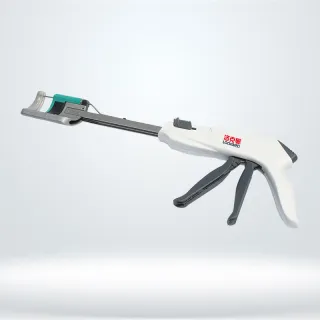What Are Surgical Staples?
Surgical staples are medical devices widely used in various surgical procedures to close wounds or incisions quickly and securely. These staples offer several advantages over traditional sutures, providing surgeons with a reliable and efficient method for wound closure.
Applications of Surgical Staples:
Wound Closure:
Surgical staples are commonly employed to close incisions or wounds after surgeries, helping to facilitate faster healing and minimize scarring.
Organ Resection:
Surgeons use staples to close incisions made during organ resection surgeries, such as removing a portion of the intestine or the removal of a diseased organ.
Joint Procedures:
Orthopedic surgeries, particularly those involving joints, often utilize staples for closing incisions related to procedures like joint replacement surgeries.
Skin Grafts:
In dermatological surgeries or cases involving skin grafts, surgical staples may be used to secure grafts in place.
Types of Surgical Staples:
Titanium Staples:
Titanium staples are lightweight, non-corrosive, and biocompatible. They are commonly used in surgeries where long-term implantation is a consideration.
Stainless Steel Staples:
Stainless steel staples are known for their strength and durability. They are often used in various surgical procedures due to their resistance to corrosion.
Disposable Staples:
Single-use or disposable staples are designed for one-time use, reducing the risk of infection and eliminating the need for staple removal.
Reloadable Staplers:
Some staplers are designed to be reloaded with additional staples during a surgical procedure, allowing surgeons to apply multiple staples without changing devices.
Surgical Stapling Procedure:
Preparation:
Before the surgical procedure begins, the surgeon selects the appropriate type and size of surgical staples based on the specific requirements of the surgery.
Positioning:
The surgeon carefully positions the stapler or staple cartridge at the site of the incision or wound that requires closure.
Application:
The surgeon compresses the stapler, causing it to fire and deploy the staples into the tissue. Some staplers simultaneously cut and seal tissue edges during the stapling process.
Evaluation:
After staple deployment, the surgeon evaluates the alignment and tension of the closed wound or incision. Adjustments may be made if necessary.
Staple Removal (if applicable):
In cases where staples are not intended for permanent use, they may need to be removed after a certain period. Removal is a relatively simple process conducted in a medical setting.
Advantages of Surgical Staples:
Speed:
Stapling is generally faster than traditional suturing, reducing overall surgical time.
Strength:
Staples provide robust wound closure, especially in areas subjected to tension or stress.
Reduced Tissue Reaction:
Surgical staples may cause less tissue reaction compared to certain types of sutures.
Consistent Closure:
Stapling devices provide consistent closure, reducing the risk of uneven healing.
Minimal Scarring:
In some cases, staples may result in less scarring than traditional sutures.
Considerations and Potential Complications:
Infection Risk:
While rare, there is a risk of infection associated with the use of staples. Proper sterilization and aseptic techniques are crucial.
Allergic Reactions:
Some patients may have allergies to specific materials used in the staples, such as nickel in stainless steel staples.
Tissue Ischemia:
Improper stapling can lead to tissue ischemia (inadequate blood supply), requiring careful application by skilled surgeons.
Patient Comfort:
Patient comfort and cosmetic outcomes should be considered, especially in procedures where aesthetics are significant.
In conclusion, surgical staples are vital tools in modern surgery, offering efficiency, strength, and reliability in wound closure. Their appropriate use, combined with careful surgical techniques, contributes to successful outcomes in various medical procedures. Surgeons, in collaboration with healthcare teams, carefully select and apply surgical staples to ensure optimal patient recovery and well-healed incisions.
63
0
0


Comments
All Comments (0)